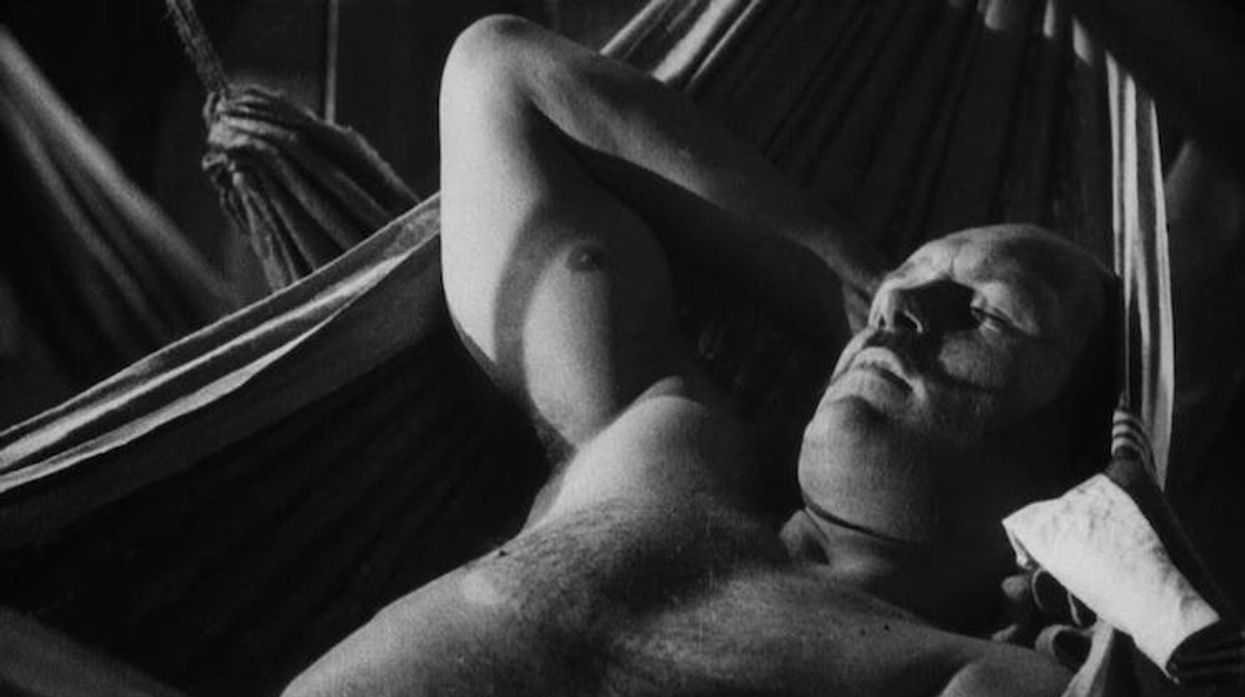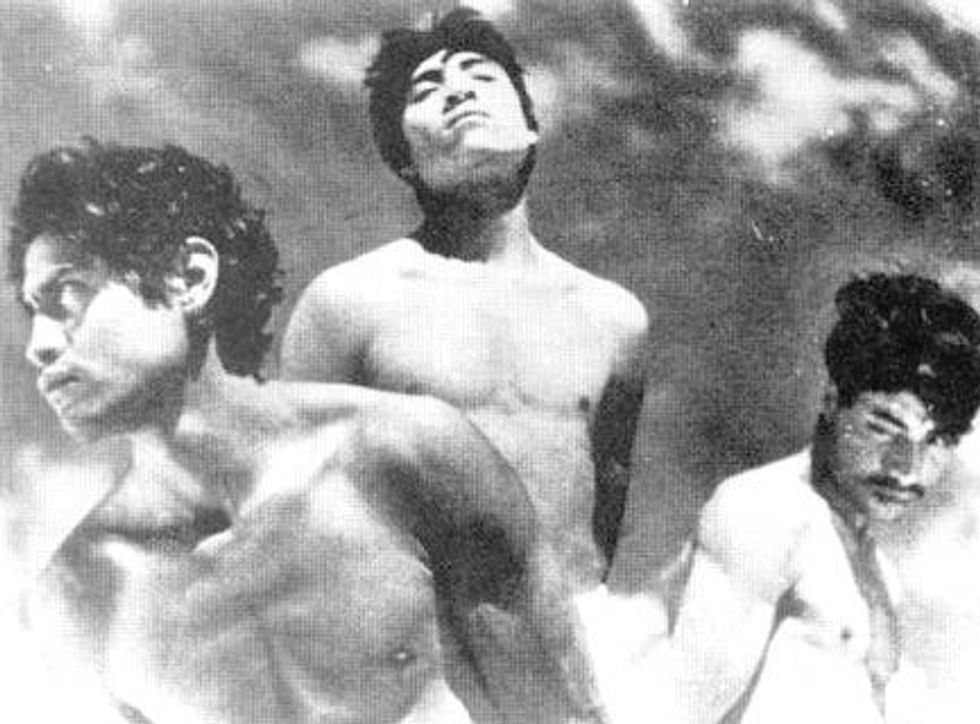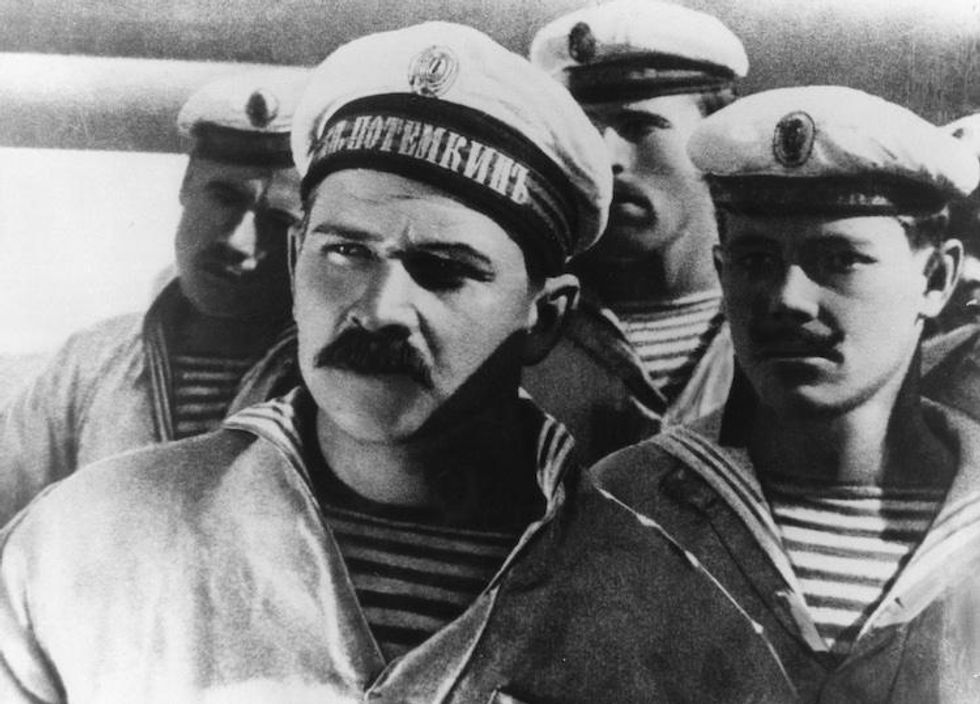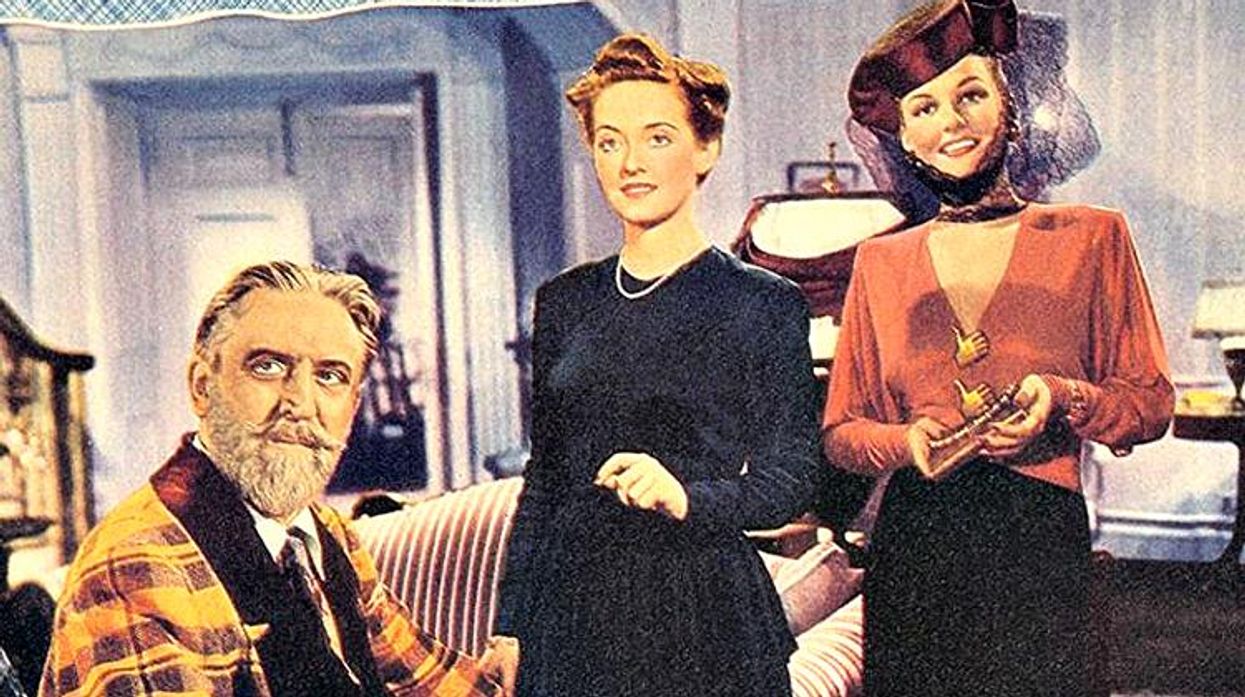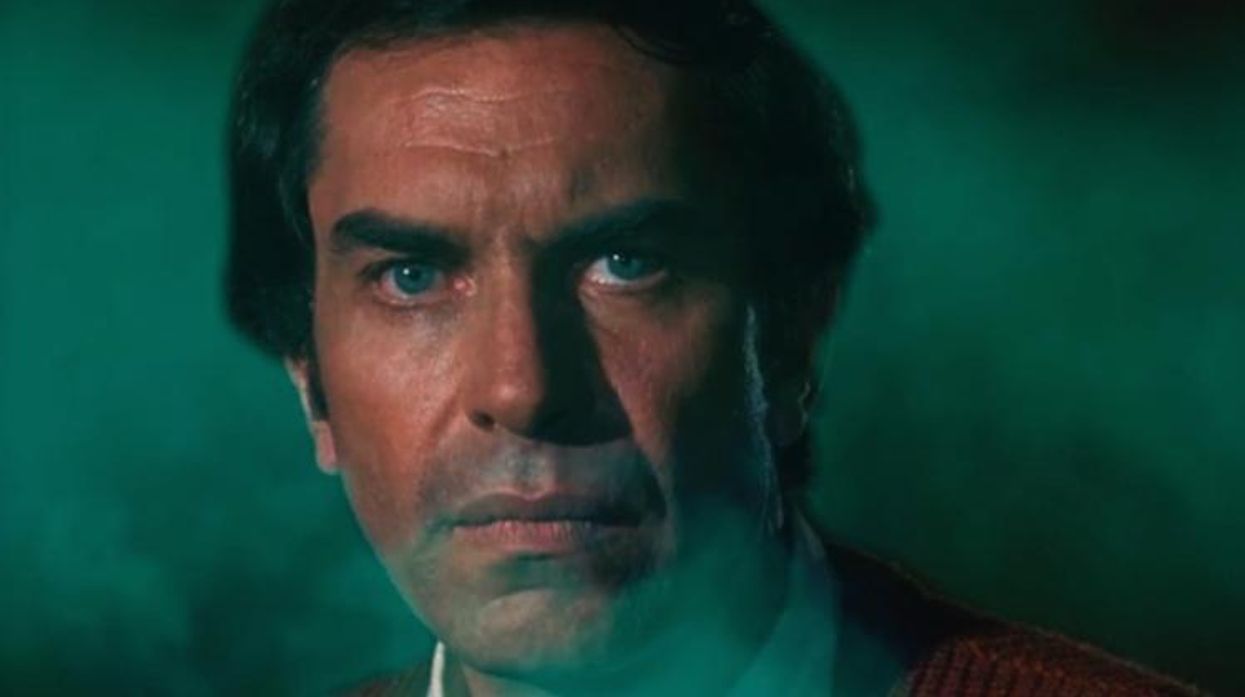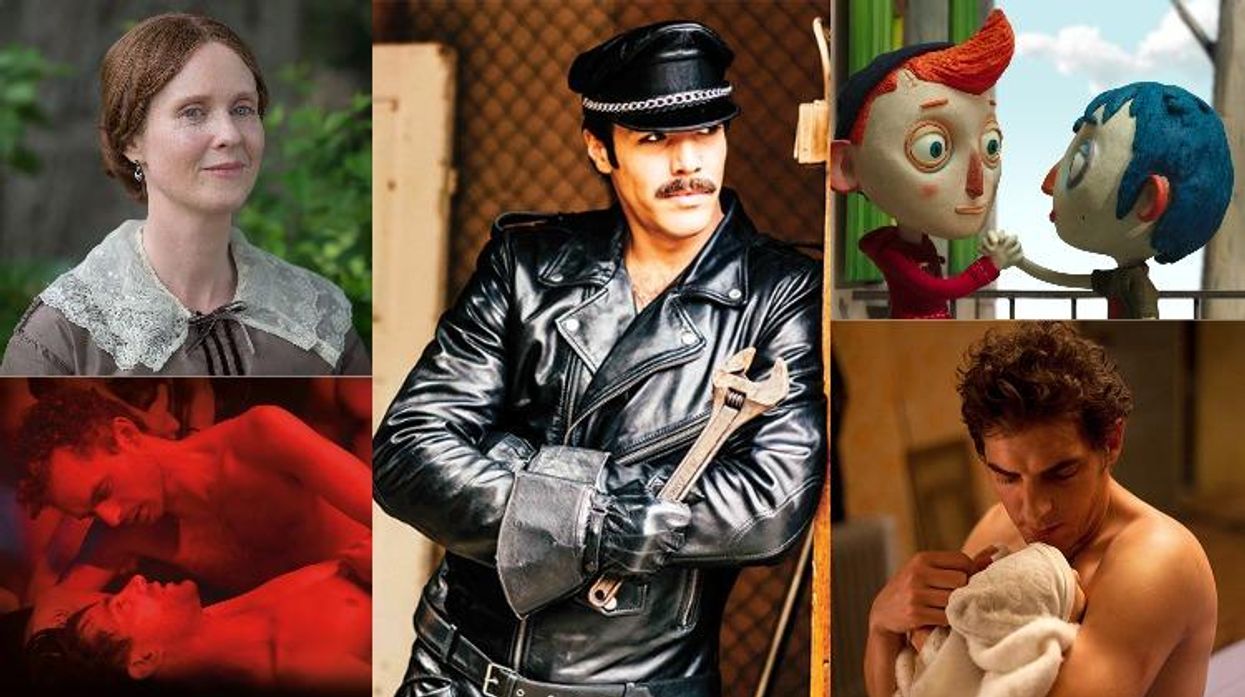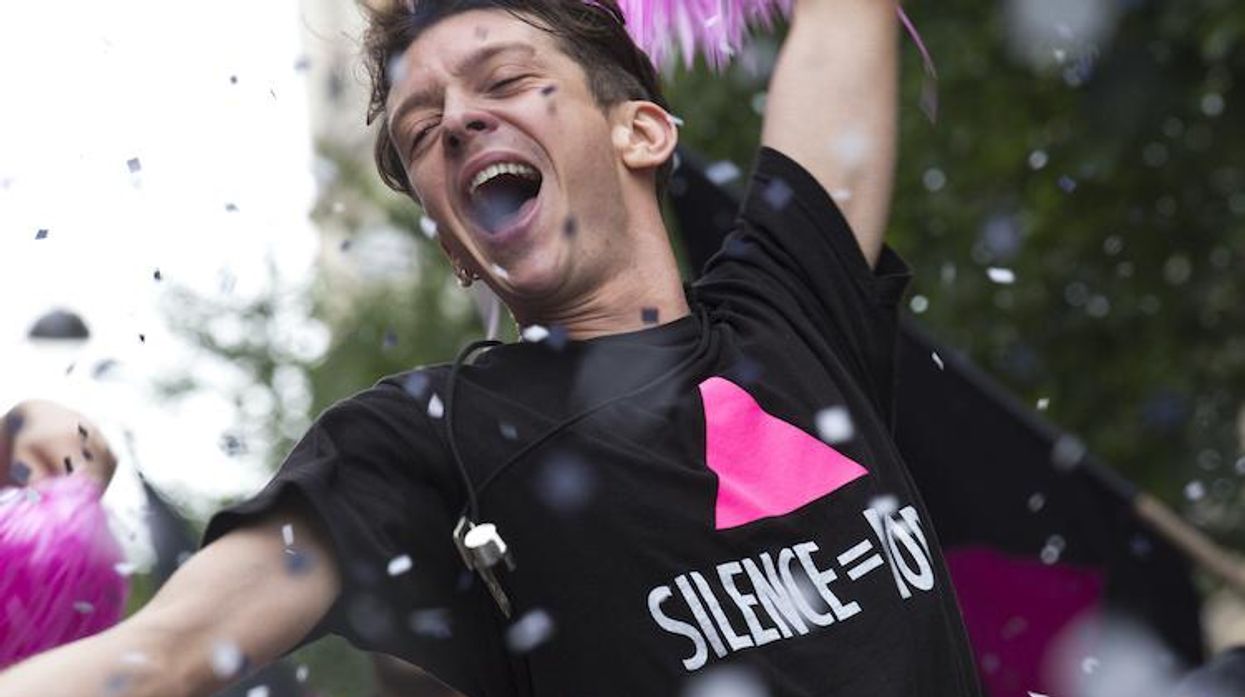Sergei Eisenstein (1898-1948), history's greatest gay filmmaker, was also among its most important along with Griffith, Godard, Lubitsch, Antonioni, Dreyer, and Sternberg. In a written tribute to D.W. Griffith, Eisenstein stated his basic artistic belief, proclaiming that cinema "compelled [all viewers] to see with the same passion."
That's also the goal of the new bio-pic Eisenstein in Guanajuata which dramatizes Eisenstein's 1931 journey to Mexico (after leaving Russian and failing to get work in Hollywood). He begins the unfinished epic !Que Viva Mexico!, financed by American novelist and politician Upton Sinclair, and embarks on an emotionally expanding sexual relationship with his male Mexican liaison. Director Peter Greenway presents this history in a film so lively and abundant with ideas and images it feels like a party--Eisenstein's coming-out party.
Still from !Que Viva Mexico!
Eisenstein's outpouring of ideas is established in a hotel shower scene where he undresses before the Hispanic attache and, in close-up, addresses his Russian penis: "Being naked and responding to an amiable young man? Senor prick, behave! He's handsome. It's true. And he see you. It's true. But you are a foreigner with a Russian passport, a limited visitor's visa and very little sexual experience. You would be woefully disadvantaged. Besides, you are here to a make a film and I need your frustration to feed my imagination. No dissipation. It leads to a dilution of energy."
With this bare-assed and full-frontal declaration, performed with bravura by Elmer Back, the film brazens Eisenstein's sexuality. Brash energy and intellectual openness was a hallmark of his films Battleship Potemkin, Strike, October that amazed the world of 1920s silent movies and still amaze. (Greenaway describes all three as "violent"--shorthand for Eisenstein's influential, innovative action movie editing--often considered "masculine.") Greenaway understands Eisenstein's dynamism and it becomes the basis of the film's multimedia approach. There's the usual Greenaway split screens, projections, dioramas and interspersed background material (visual footnotes) that help tell the story of a gay artist in exile but whose imagination and artistic and sexual drive never make him alien.
As a stranger in a foreign land, Eisenstein exposed himself, body, intellect, soul--even the unfinished film is yet a masterpiece. !Que Viva Mexico! visualized Eisenstein's empathy with Mexican peasants. The radiant iconography is sensual--even spiritual--in a style similar to what made the sailors in Battleship Potemkin still some of the most homoerotic portraiture in cinema history. (Both films were photographed by the legendary cameraman Edouard Tisse, introduced respectfully by Eisenstein as "the cameraman.")
Still from Battleship Potemkin
Eisenstein's homosexuality (discussed even less by film scholars than the German master F.W. Murnau's) has always been an open secret in film history. But if you're insensitive to his aesthetic sensibility it won't help you to know his secret. For Greenaway, the artist's gayness is an extension of that "same passion" (homo-sensitivity?) that Eisenstein felt was the cinema's special gift. (Pet Shop Boys composed an original score for Battleship Potemkin to pay tribute to Eisenstein's humane politics and his still avant-garde genius.) Such artistic affinity explains Greenaway's newly focused brilliance. His own '80s- '90s art films (The Draughtman's Contract, In the Belly of the Architect, Drowing By Numbers, the X-rated The Cook, the Thief, His Wife and Her Lover) often were overly abstract--even The Pillow Book starring Ewan MacGregor's non-abstract endowment--but this is Greenway's richest, most accessible storytelling. And like the Pets, Prokofiev's "The Love for Three Oranges" provides Greenaway a high-art, mass-art musical theme.
Greenaway offers a series of tour-de-force visual montages to match his script's brilliant expository speeches. Always thinking, feeling, talking, the frizzy-haired, ungainly Eisenstein lectures on his career, cinema and the contrasts of European and American colonialism. The latter is apparent in his affair with dark, mustachioed Canejo (Luis Alberti). They first experience siesta then intimacy--it's one of the most deft and deep gay male relationships ever put on screen. ("He's my instructor in comparative religions!" a newly awakened Sergei smiles.) In a surreal plus, Greenaway animates Eisenstein personal notebook of Picasso-like erotica.
Still from Eisenstein in Guanajuato
Eisenstein's eccentricity became the butt of smart-ass parody in Ghostbusters II (actor Peter McNichols' mad-genius with a red Afro), but intellectual Greenaway doesn't condescend to mainstream anti-intellectualism or unconscious homophobia. The revealing, adult intimacy here makes this a breakthrough film--it combines sexual and emotional frankness in Sergei and Canejo's intercourse ("I have reached my accustomed point and this is where I stop") that surpasses most gay-identifying, politically correct moviemakers. For the initiation scene alone, Eisenstein in Guanajuato should have been the break-out hit at all last year's queer film festivals. The exuberance, eroticism, insight and valuable introduction to a giant of cinematic and gay history make this extravaganza 2016's queer movie standard.
Gay moviegoers are increasingly subject to minority-group marketing and often fall for being stereotyped and segmented by Hollywood. This goes against Eisenstein's struggle, his innovation and his belief in moviegoers all seeing with the same passion.


